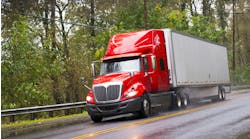Developments in zero-emission freight movement are accelerating every day. The government and the private sector have recently earmarked funds for infrastructure development to help with this acceleration. The ability to charge electric vehicles is seen as one of the biggest stumbling blocks to their widespread deployment.
In addition to funding infrastructure, California is implementing new regulations requiring that all new passenger vehicles sold in the state must be zero-emission by 2035. And most recently, the U.S. Environmental Protection Agency approved a plan by California to require half of all new heavy trucks sold in California to be electric by 2035.
See also: EPA proposes even stronger pollution standards for all trucks and cars
The journey toward zero-emission freight movement has many facets to it. We need to see development in a wide range of areas. Today, battery-electric trucks are suited for return-to-base operations within the 150- to 200-mile range. While there certainly is an abundance of fleets that operate within those parameters, trucking is much more diverse, and battery-electric vehicles today are not capable of the range needed by many other duty cycles.
As I mentioned, work is underway to establish charging infrastructure and ensure grid resiliency, but there are areas of the battery-electric truck ecosystem that need to be addressed.
I recently read about a partnership between the U.S. Department of Energy and Stellantis called the Battery Workforce Challenge. The program is tackling the issue on a number of fronts. Its three-year collegiate engineering competition is focusing on advanced battery design development. There is a lot of work necessary to extend battery range, and what better way to achieve those advancements than to engage the best and brightest young engineering minds?
The program also focuses on vocational and technical career training. When battery-electric vehicles come into the market in larger numbers, we will need a technician workforce that has the skills necessary to safely and accurately maintain and repair them. We need to begin training that workforce today so they are ready when battery-electric vehicles begin to roll into their shops.
As we make the move to battery-electric trucks—and really any alternative fuel vehicles—we have to look beyond just the trucks and consider the entire ecosystem. If we fail to do that, we will make the journey more difficult.
Patrick Gaskins, SVP of Corcentric Fleet Solutions, oversees both sales and operations for the company's fleet offerings. Gaskins joined the company in 2010, bringing more than 30 years of experience as a financial services professional in the transportation industry. He leads a team that works with a supply base of more than 160 manufacturers to help the country’s largest fleets manage all aspects of their fleet operations and fleet-related spending.




